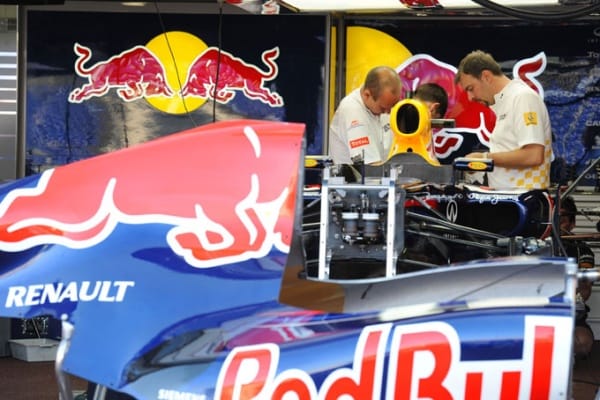
Renault F1’s Preview to the German GP
20 July 2011 – The 2011 FIA Formula One World Championship now makes its way to Germany for round 10 of 19, the German Grand Prix, held this year at the twisty, undulating 5.148km Nürburgring on the edge of the Eifel mountains and forest range to the north of the country.
The German Grand Prix is the home Grand Prix for two of the Renault-powered drivers; Lotus Renault GP’s Nick Heidfeld and Red Bull Racing-Renault’s Sebastian Vettel. Renault engines have won at the Nürburgring five times, the first victory coming in 1995 with Michael Schumacher and the fifth at the 2009 German Grand Prix with Red Bull’s Mark Webber.
A lap of Germany from an engine point of view:
Sector one
There’s a long run from the start finish line to the first corner, the Castrol-S, a second gear hairpin where revs will drop very low: just 9,500rpm. Then it’s straight into the Mercedes-Arena; a second to third gear complex taken with an average speed of around 100kph. Through this section the engine needs to have good braking control on the entry to corners and good traction on the exit, however also needs to be responsive enough to accelerate out of the arena down the short straight leading down to turn 5 where cars will hit 268kph before the braking zone.
Sector two
Turn 5 is a fourth gear left hander that quickly tightens into turn 6, a right hander taken in third gear, but then it’s back on the power for another short burst before the next heavy braking zone for the Dunlop-Kehre hairpin. Like turn 1, this hairpin is taken in 2nd and engine revs drop quite low – just 10,500rpm. The driver then needs a responsive engine to accelerate for the ‘straight’ leading through turns 8 and 9. Even though turns 8 and 9 are taken in sixth at 250kph – not normally top speed – the drivers will be flat and will pull around 3.5g through this section. They will then drop from 291kph to 145kph and third gear for turn 10.
Sector three
Sector three is the shortest section in time, taking around 24secs to complete. It’s also the highest average speed on the track and the DRS activation zone, which comes 62m after turn 11. Drivers will be able to make use of the DRS on the 755m straight from turn 11 to 13 before braking for turn 13, or the Veedol chicane, a second gear chicane that sees drivers brake from 305kph to just 90kph. The track then opens back out for a final sprint to the last corner, a third gear right hander taken at 120kph, before rejoining the pit straight for another lap.
View from Rémi Taffin, head of Renault Sport F1 track operations:
The Nürburgring is a medium speed track with an average of 191kph and a maximum speed of 305kph in qualifying. The average is balanced out by a mix of low speed corners, such as turns 1 and 7 where the cars will run between 75 and 95kph and the four long straights. As a result the engine has to be driveable through the lower revs but also offer responsiveness and top end power. In particular we will work carefully on the selection of the top gear ratios since seventh gear will be engaged four times a lap, a higher than average usage.
Track conditions change a lot over the weekend at the Nürburgring. Even though the circuit is used frequently by other motorsport formulae over the year, the fact Formula 1 only visits once every two years means that fresh rubber will be laid down during the weekend. As a result we will run less aggressive engine maps at the start of the event to allow the driver to be smoother on the throttle and fine tune towards a more aggressive mapping as the grip improves.
